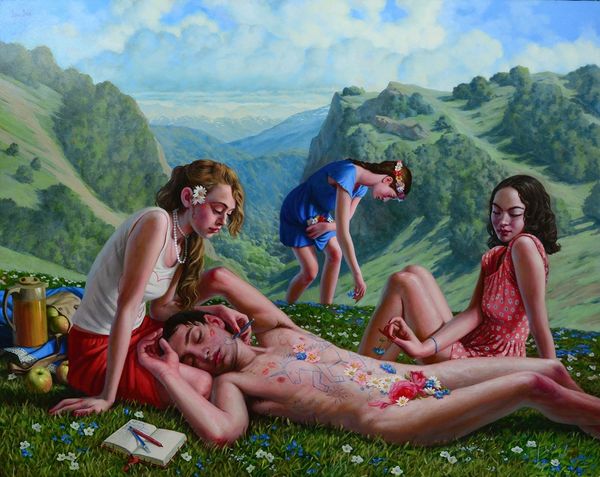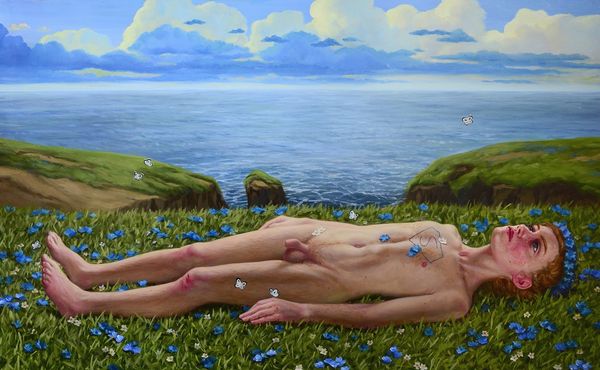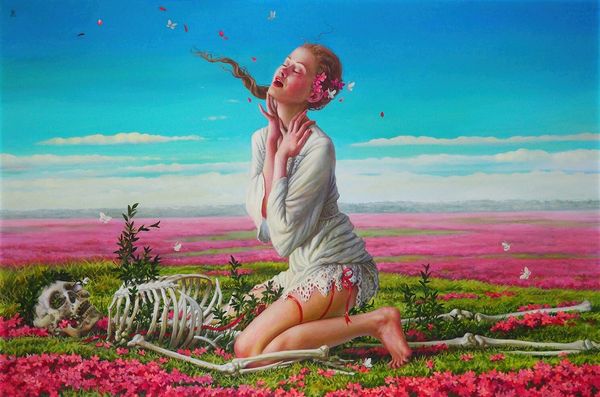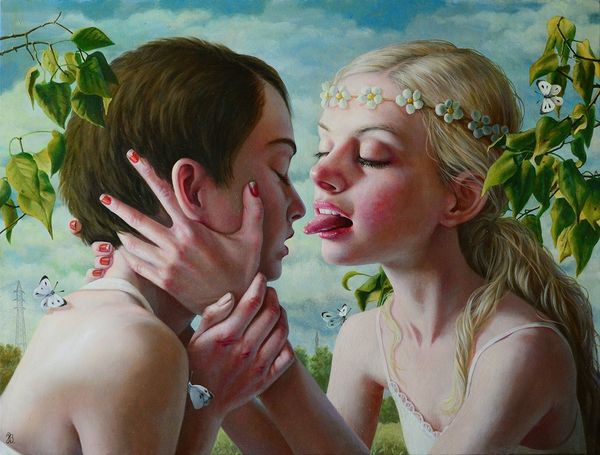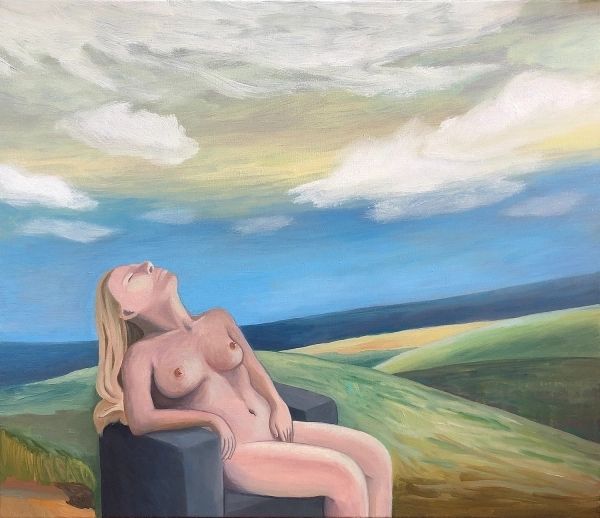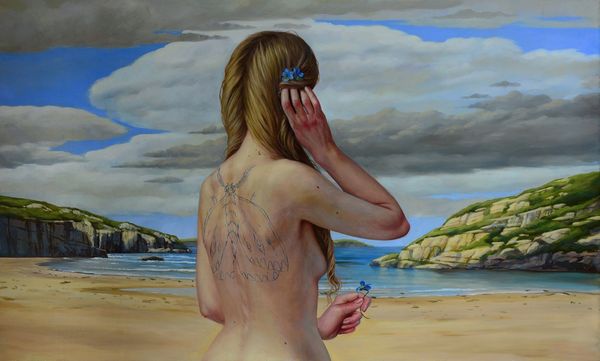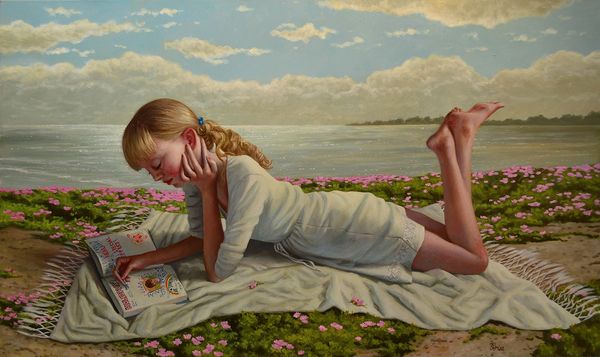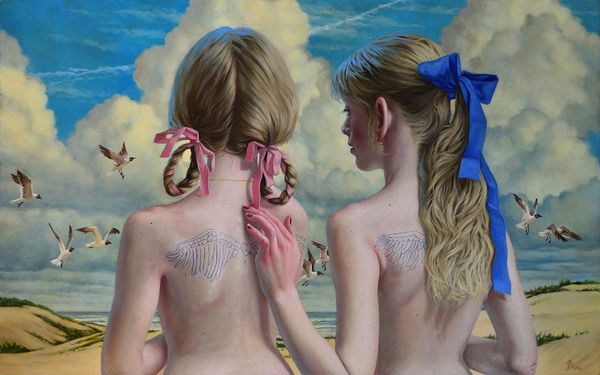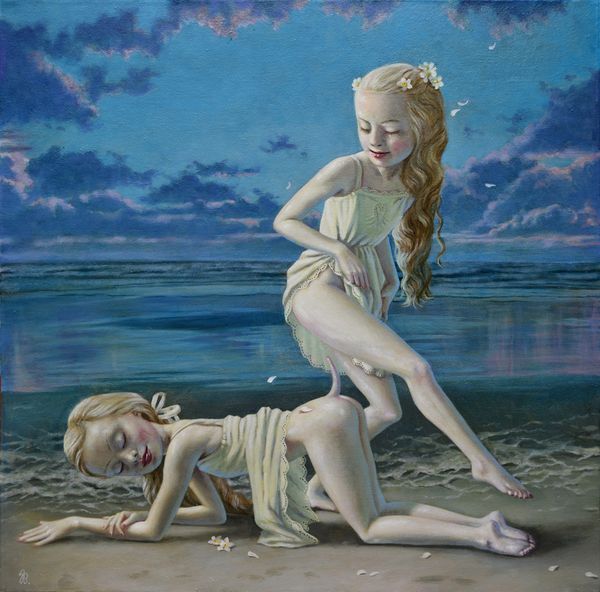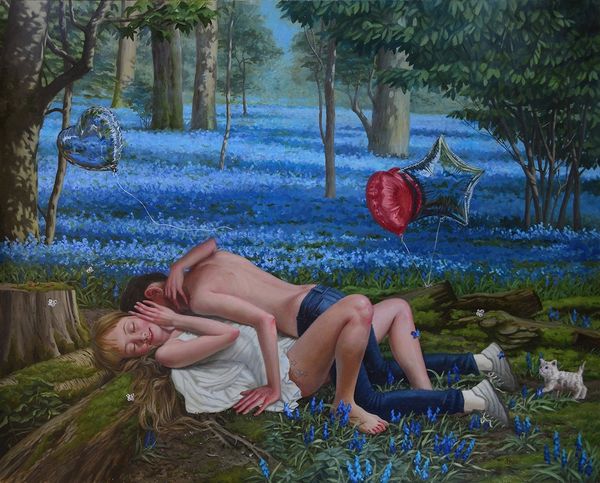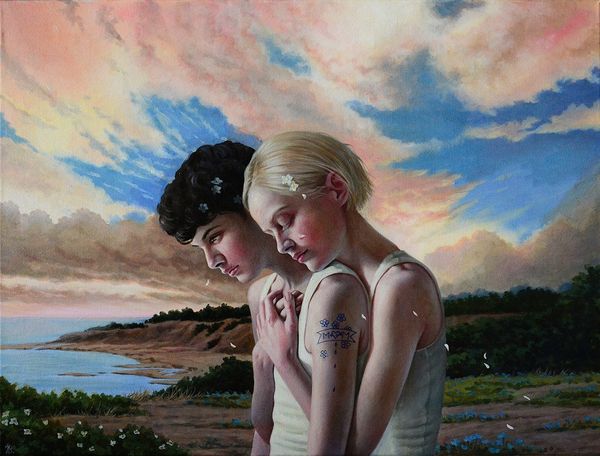
Copyright: Modern Artists: Artvee
Curator: This acrylic painting, “Holidays at Grandma’s Place,” was created in 2015 by Jana Brike. The piece evokes a sense of dreaminess; what do you make of it? Editor: It feels intensely nostalgic, almost suffocatingly so. There's a heavy tranquility to it that makes me a little uneasy. Curator: Interestingly, the artist often explores themes of adolescence and female identity within surreal landscapes, fitting with some aspects of neo-expressionism. How does that understanding change your first impression? Editor: It adds another layer, complicating that sense of unease. There’s a Lolitaesque gaze at play. Are we meant to view these figures, these adolescent women, as objects within this dreamy, almost aggressively idyllic setting? It brings up uncomfortable questions about power, gaze, and the construction of female innocence. Curator: These are worthwhile and complex perspectives to consider when experiencing the painting. You could say the piece challenges conventional understandings of childhood and sexuality as it places the subjects within an overtly romantic composition. There are elements of romanticism and surrealism coming together here. The girls, seemingly frozen in time, present the observer with an uncanny contrast. Editor: Precisely. And Brike seems very self-aware of the tension, I suspect. Look at how the composition deliberately emphasizes their bodies, almost bordering on hyperrealism. But she then offsets it by setting them within a scene that seems to echo traditional landscape painting – nature, innocence, and carefree abandon all at the fore. It creates this unsettling push and pull, almost begging us to deconstruct those supposed themes of innocence and freedom. Curator: I agree. The landscape serves not only as a backdrop, but also an active participant in shaping the meaning of the work. I see echoes of academic traditions influencing contemporary explorations. Editor: Exactly. Which encourages me to consider our role in its public display – how we frame and discuss such works deeply impacts how viewers perceive them. We need to offer people the frameworks to critically consider this work in order to prevent harmful projections from overwhelming our dialogue. Curator: Yes, absolutely. Highlighting context is critical in today’s social and cultural landscape. Editor: And on that note, hopefully we've encouraged our listeners to think more deeply about the complicated intersections of art, representation, and the critical discourses that shape our viewing experience.
Comments
No comments
Be the first to comment and join the conversation on the ultimate creative platform.

